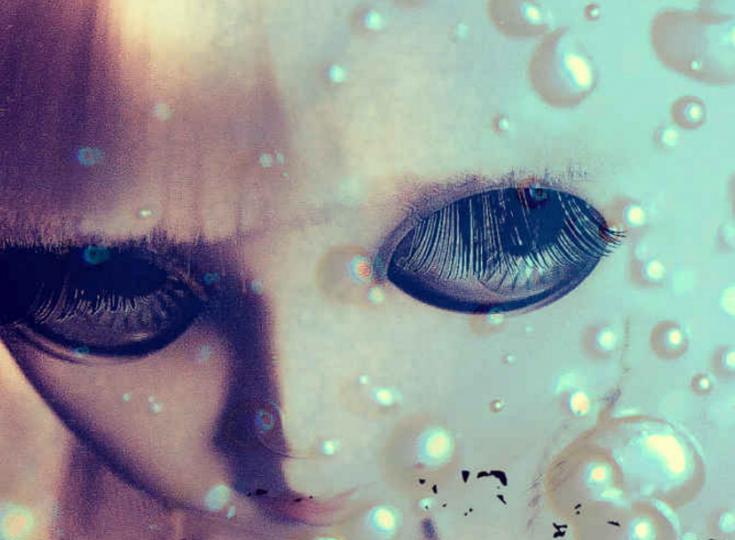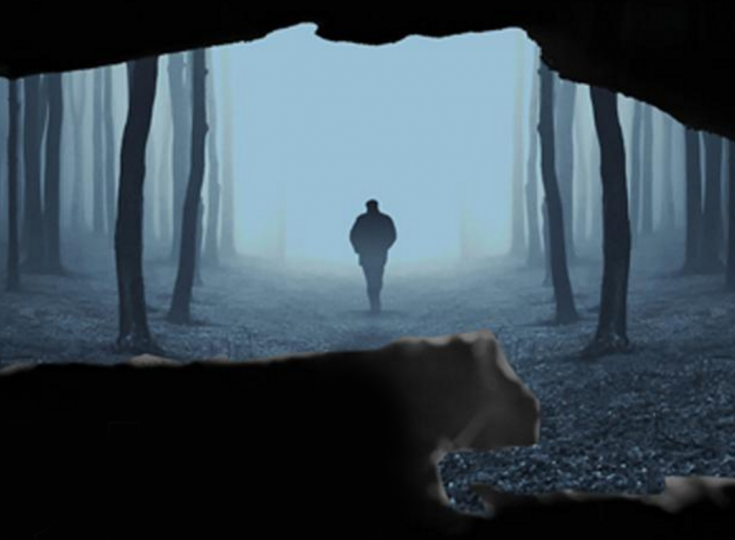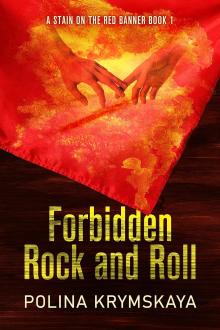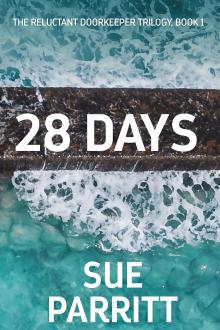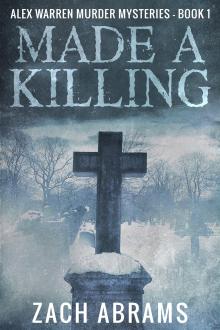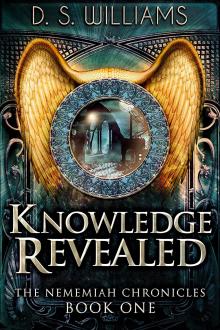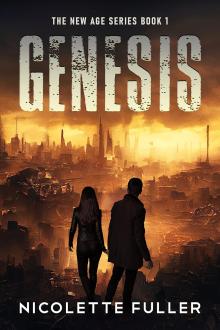Ezekiel Nieto Benzion - Sharing the Real Stories of the Jews
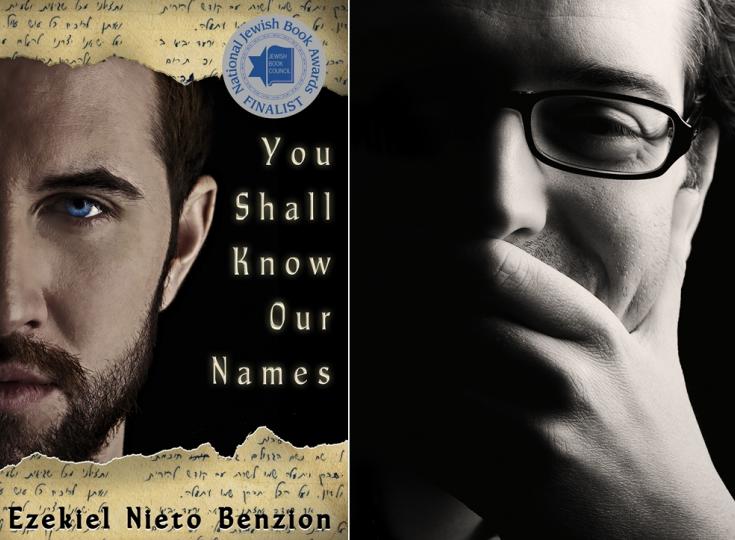
Ezekiel Nieto Benzion grew up listening to his grandfather's stories about the Jews. Those stories painted a very different picture from the meek victims in the Holocaust pictures we often get to see. After his grandfather's passing, Benzion realized that he was the last one to know some of those stories and that they needed to be shared with the world. As our author of the day, Benzion chats about his family, about strong, defiant fighters and how he picked and visited the locations in his book.
Please give us a short introduction to what You Shall Know Our Names is all about.
You Shall Know Our Names is the story of a family's heritage and destiny. It connects two generations of a family, 200 years apart, through a shared passion for justice and a willingness to struggle against oppression. In Part I, Zayde, my grandfather, an immigrant and a labor leader in NY, reveals the "journals" that describe the exploits of the family's forebears. He had hidden them until he thought his very American descendants were ready to understand them. As the book begins, he hands the treasured pages to his grandson and explains why it is now the time for him to untangle the clues and tell the stories. In part 2, we meet the "journals'" author, Judah Halevi Hassan, a surgeon, and learn what drives him in the early 19th century in Bohemia, to become part of the Nokmim, the Revengers, a secret organization of Jews who fight back against their oppressors. We meet the key figure, the leader, Ezekiel Benzion, who embodies the family's passion for justice and whose name is carried down through generations to the author himself.
Tell us a bit more about the old family journals - what inspired you to write about them?
The "journals" are a physical representative of the stories that my grandfather told me. In his mid-nineties, he was losing his sense of the present time as the past was returning vividly. We spent evenings in semi-darkness in his apartment as he spoke in a rush of Yiddish, literally hurling toward the end of his life, wanting to make sure the stories would be known by his descendants. The stories revealed a Jewish world in Europe different from the common images that depict Jews as meek sheep being led to the slaughter. Instead, he told of strong defiant people who fought back to such an extent that their villages became known as havens of safety in a dangerous world. The stories haunted me for years. Then I realized with shock and a bit of panic, that I was the last person to know them. I took on the sacred responsibility to retell the tales so that, as my grandfather desired, they would be saved for the next generations.
Who was Juda Halevi exactly?
Exactly ? I am not sure. As the series unfolds, we learn that Judah struggles with this himself. The character represents complex contrasts: he is a Jewish doctor in a world that does not permit him to enter the profession fully, he is a Sephardic (Spanish) Jew who is now mired in the Ashkenazic (northern European) world, he is the son of a great rabbi who has declared him dead to the family because he chose medicine over religion. He is a man of healing and peace who makes the decision to become a fighter against injustice, a fight that leaves scars on his body and his psyche.
There was a great Jewish poet, also Judah Halevi, in the 12th century who eventually immigrated from Spain to the Holy Land. I have left it open to speculation whether my Judah Halevi could be a descendant of that Judah Halevi.
How much research did this book require from you?
The research was in the details. I had long studied the period of history in which it was placed so I knew the dynamic societal changes that were taking place across Europe as the ideas of the Enlightenment with its emphasis on the natural rights of man spread. From the ideals of the Enlightenment sprang the American and French Revolutions , that occurred just a few years before the book's story in Part II. At the time of the novel, Napoleon is marching through Europe, tearing down ghetto walls and tearing up restrictions on education and occupations that had limited the opportunities of the Jewish populations.
What I wanted to know was whether people in small villages in the middle of Europe would have felt and responded to these changes and ideas. On trips to the region, it became clear that changes, albeit small, were beginning to take place even in "remote" villages. Small towns were on the routes between major cities so it is quite clear that news of uprisings in the region, and the gains of new freedoms and opportunities would have been known to those who were still mired in the oppression of the old order.
What was the most interesting aspect of your research?
The idea of the small Jewish villages of eastern Europe not being like "Anatevka" of Fiddler on the Roof. As recent scholars have described them, there was a golden age of these "shtetls" from the late 18th to the last quarter of the 19th century, in which Jews and the other communities built thriving economies side by side. These were robust people who worked in many trades we don't associate with Jews (blacksmith, brewer, highwayman (yes!)) and who fought back and quarreled and sued their neighbors in court cases (and often won). I wanted to depict the vibrancy of such communities in the atypical characters in the book.
The descriptions of the locations in your novel are very vivid. How did you pull this off?
I spent time in the locations on multiple trips. In particular, I walked and rewalked the old parts of Prague and Jilhava, and spent time in the region around both where Jewish villages once existed. The most poignant sights were old Jewish cemeteries hidden in pine forests in places where there are no Jews left. Who were these people? What were their lives like in remote tiny villages in this part of Europe? Those images haunted me and formed the symbol of the stories that needed to be told. That is why the cemetery in the book becomes an important focal point. And by the way, the people who are buried in the Benzion cemetery have their stories revealed throughout the series.
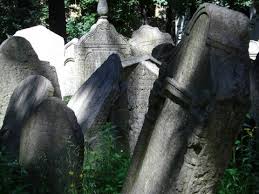
How much of the novel is fact and how much fiction?
The stories of fighting back against oppression are factual, both in my grandfather's tales and in the research that has been done. We know that Jews did band together to fight back against those who harmed their communities and that there were safe "villages" where people sought refuge. Many of those people later formed the basis of the labor and progressive movements that fought for the rights of the common man.
What is fiction is the time period and place. I moved the stories back a hundred years and from Czarist Russia to Bohemia. That was done to make it possible for me to apply my research and knowledge of Napoleonic Europe to the tales. The old adage, "write what you know," was an influence in this decision.
What has your family's reaction been like to the book? Do they like it?
The family felt I captured Zayde very vividly in Part I. They also saw many other family members reappearing in Part II (Frau Klein, for one, at the butcher shop was my Bubbe). Unfortunately neither Zayde nor Bubbe lived to see the book. I would have really wanted their responses to it.

Part II was news to many family members since I was the only and last person to hear the stories.
Does your book contain an underlying message? What does it say about humanity?
That justice emerges only when we are willing to fight for it. There is a beautiful Hebrew poem, "The Silver Platter," which describes the very young soldiers who fought in Israel's war for independence. They emerge from the fog of war, blood-stained and weary. When asked who they are, they reply, "We are the silver platter." Meaning that freedom is not handed out on a silver platter, that one must fight and even die for it. It is a battle that leaves scars. Judah Halevi is a conflicted figure because he must sacrifice one of his cherished ideals, to free people from suffering, to the cause of fighting for justice which requires him to engage in bloody deeds.
Your book paints the Jewish people not as much as victims, but as people with great inner strength, who fought back. Why did you take this approach?
I wanted to dispel stereotypes. For years, the images of Jews in Europe were of hollow-eyed skeletons behind the fences of the death camps. I wanted to remind readers of those Jews who demanded that they be treated as equals, who fought those who sought to diminish them, who handed to their future generations the belief that injustice must and can be destroyed. These were the people in the Jewish Bund that took up arms in Odessa against the pogroms, who fought back in the ghettoes of Lodz and Warsaw, who escaped from the transport trains or from the death camps and joined the partisans in the forests of Poland or became leaders of the French Resistance. My grandfather dedicated his life to the plight of the garment workers, carrying on the work of his brothers who died in political uprisings against the Czar. So my lived experience was definitely not of Jews who were victims but people who raised their voices and fists against the oppressors.
Tell us about your writing habits - what does an average writing day look like for you?
Generally I can write for about three hours in the morning between the early morning dog walk and the mid-day dog walk. I say that because I adopted the puppy to make sure I got up from the computer every few hours. No matter how tempted I am to continue writing, he reminds me it is time to get outside and breath fresh air.
I usually return to writing late afternoon and then later at night for briefer periods of time.
What are you working on right now?
Book six in the series,currently called "Seeing the World Anew." is in its umpteenth draft. It has been a struggle because the characters always seem to be shifting their focus. The story centers on the Farm, the haven protected by Ezekiel Benzion and the Nokmim. In the relative safety of the Farm, several characters are thinking through choices in their llves, but as always, the world outside intrudes and they must engage once again in fighting back to protect the world they have built.
I just want to mention that each of the books are intended to be read as stand alone books and I have had many readers do just that: read one book out of sequence because of their interest in the character or community it depicts.
Where can our readers discover more of your work or interact with you?
I respond to readers via email: [email protected]. I also am on Facebook as EzekielNBenzion and there is a family foundation page on FB: the Nieto-Benzion Family where we put up stories of heroes in families that come to our attention. I have a web page, TellingOurTales.net, which shares stories and thoughts of family in order to preserve these precious memories.
